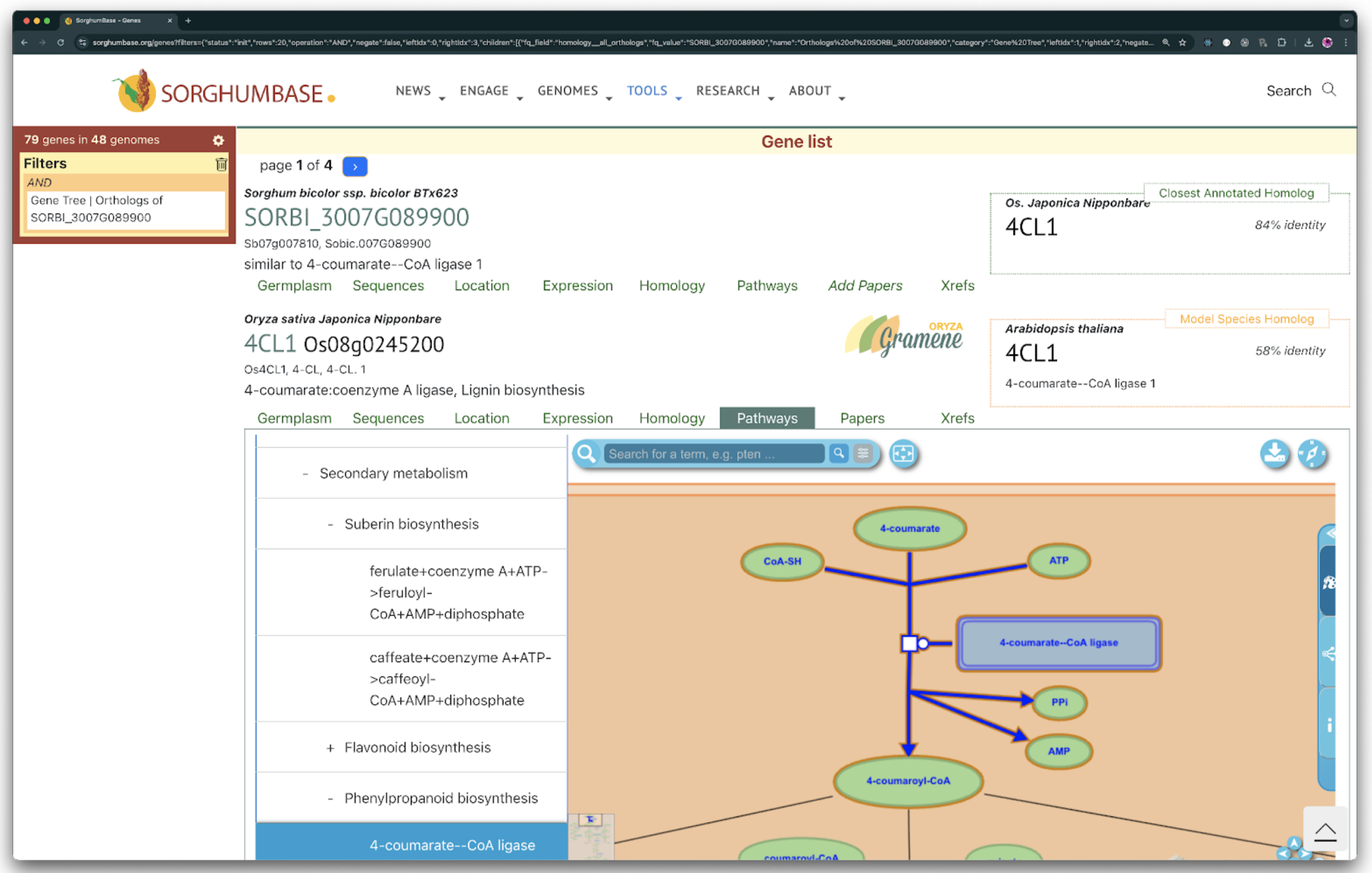Transgenic sorghum with reduced lignin content, engineered via RNAi-mediated 4CL gene silencing, improves carbohydrate accessibility and biomass yield for enhanced biofuel production.
Keywords: 4CL, Bioethanol, Cell wall carbohydrates, Regenerative callus, Transgenic sorghum
Sorghum bicolor is a promising biofuel crop due to its adaptability, low input requirements, and ability to grow on marginal lands. However, the high lignin content in sorghum stalks presents a major challenge for efficient biofuel production, as lignin acts as a barrier to carbohydrate extraction and conversion into fermentable sugars. Researchers from the Indian Institute of Technology isolated the 4CL gene from sorghum and constructed an RNA interference (RNAi)-inducing hairpin RNA (hpRNA) cassette to suppress its expression. The 4CL enzyme plays a crucial role in the phenylpropanoid pathway, which is essential for lignin biosynthesis. By downregulating this gene, the study aimed to reduce lignin content while maintaining normal plant growth. The transformation process was optimized using Agrobacterium-mediated gene transfer, where an optimal bacterial load was determined to prevent excessive tissue necrosis while ensuring successful genetic modification. The researchers successfully generated transgenic sorghum plants with altered lignin composition and confirmed the integration and expression of the transgene through molecular analyses.
The transgenic lines exhibited a reduction in lignin content, particularly in syringyl (S) lignin, which was confirmed by histological staining and spectrophotometric analysis. The reduced lignin levels improved carbohydrate accessibility, potentially enhancing biofuel yield. Additionally, the transgenic plants showed increased growth and biomass accumulation, likely due to metabolic shifts favoring carbohydrate deposition over lignin synthesis. The research provides a foundational approach for engineering lignin composition in sorghum, with implications for improving biomass processing and biofuel production. The stable inheritance of the transgene across generations suggests that these modifications could be viable for large-scale agricultural applications, contributing to the development of more efficient biofuel feedstocks.
SorghumBase examples:


Reference:
Bhanupriya C, Kar S. RNAi-mediated downregulation of endogenous 4-coumarate: CoA ligase activity in Sorghum bicolor to alter the lignin content, which augmented the carbohydrate content and growth. Planta. 2025 Jan 10;261(2):30. PMID: 39794647. doi: 10.1007/s00425-024-04603-y. Read more
